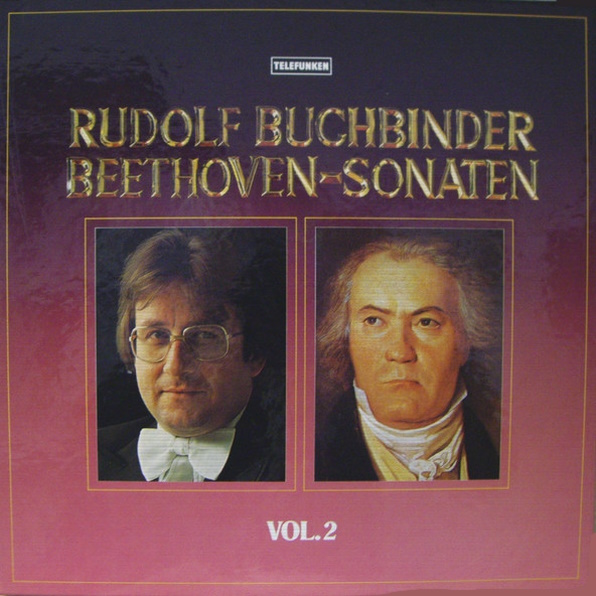 |
|
3 LPs
- 6.35490 FK - (p) 1981
|
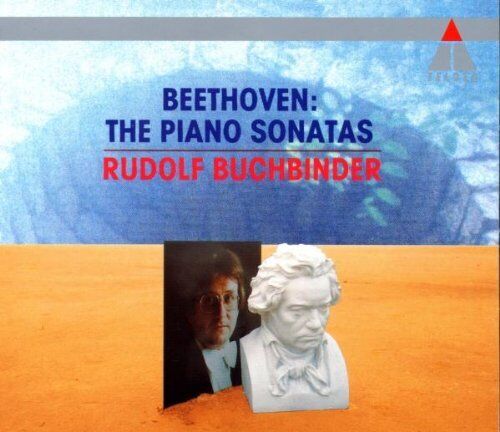 |
| 8 LCDs -
9031-71719-2 - (c) 1990 |
|
KLAVIERSONATEN
- Volume 2
|
|
|
|
|
|
|
|
| Ludwig van
BEETHOVEN (1750-1827) |
Klaviersonate
Nr. 1 f-moll, Op. 2 Nr. 1 - Joseph
Haydn gewidmet (Komponiert um
1795)
|
|
16' 24" |
|
|
-
Allegro |
3' 22" |
|
A1 |
|
-
Adagio |
5' 27" |
|
A2 |
|
-
Menuetto: Allegretto |
2' 55" |
|
A3 |
|
-
Prestissimo
|
4' 40" |
|
A4 |
|
Klaviersonate
(Leichte Sonate) Nr. 19 g-moll,
Op. 49 Nr. 1 (Komponiert 1795/98)
|
|
7' 07" |
|
|
-
Andante
|
3' 54" |
|
A5 |
|
-
Rondo: Allegro
|
3' 13" |
|
A6 |
|
Klaviersonate
Nr. 2 A-dur, Op. 2 Nr. 2 - Joseph
Haydn gewidmet (Komponiert
1795)
|
|
21' 32" |
|
|
-
Allegro vivace
|
6' 26" |
|
B1 |
|
-
Largo appassionato
|
5' 54" |
|
B2 |
|
-
Scherzo: Allegretto
|
3' 11" |
|
B3 |
|
-
Rondo: Grazioso
|
6' 01" |
|
B4 |
|
Klaviersonate
(Leichte Sonate) Nr. 20 G-dur,
Op. 49 Nr. 2 (Komponiert 1795/98) |
|
8' 21" |
|
|
-
Allegro, ma non troppo |
4' 38" |
|
B5 |
|
-
Tempo di Menuetto
|
3' 43" |
|
B6 |
|
|
|
|
|
|
Klaviersonate
Nr. 12 As-dur,
Op. 26 - Dem
Fürstin Carl von
Lichnowsky
gewidmet
(Komponiert
1800/01)
|
|
19' 01" |
|
|
-
Andante con Variazioni
|
7' 24" |
|
C1 |
|
-
Scherzo: Allegro molto |
2' 29" |
|
C2 |
|
-
Marcia funebre sulla morte d'un Eroe
|
6' 38" |
|
C3 |
|
-
Allegro |
2' 30" |
|
C4 |
|
Klaviersonate
Nr. 15 D-dur,
Op. 28 "Pastorale" -
Joseph Edlen von
Sonnenfels
gewidmet
(Komponiert 1801)
|
|
22' 13" |
|
|
-
Allegro
|
9' 14" |
|
D1 |
|
-
Andante |
6' 21" |
|
D2 |
|
-
Scherzo: Allegro vivace
|
1' 53" |
|
D3 |
|
-
Rondo: Allegro ma non troppo |
4' 45" |
|
D4 |
|
|
|
|
|
|
Klaviersonate
Nr. 21 C-dur, Op. 53 "Waldstein-Sonate" - Dem
Grafen
Ferdinand von
Waldstein
gewidmet
(Komponiert
1803/04)
|
|
21' 46" |
|
|
-
Allegro con brio
|
9' 12" |
|
E1 |
|
-
Introduzione: Adagio molto
|
3' 37" |
|
E2 |
|
-
Rondo: Allegretto moderato
|
8' 57" |
|
E3 |
|
Klaviersonate
Nr. 32 c-moll, Op. 111 - Dem
Erzherzog Rudolph von Österreich
gewidmet (Komponiert 1821/22)
|
|
27' 07" |
|
|
-
Maestoso · Allegro con brio ed
appassionato
|
8' 56" |
|
F1 |
|
-
Arietta: Adagio molto semplice e
cantabile
|
18' 11" |
|
F2 |
|
|
|
|
Rudolf BUCHBINDER,
Klavier (Steinway-Flügel)
|
|
|
|
|
|
Luogo
e data di registrazione |
|
-
|
|
|
Original
Editions |
|
Telefunken
| 6.35490 FK | 3 LPs | LC 0366 |
durata: 53' 24" · 41' 14" · 49'
53" | (p) 1981 | ANA | stereo
|
|
|
Edizione CD
|
|
Teldec
| 9031-71719-2 | 8 CDs | LC
3706 | (c)
1990 | DDD/DMM | stereo |
Klaviersonaten Nr. 1-32
Teldec | 8.43415 ZK | 1 CD | LC
3706 | (c)
1986 | DDD/DMM | stereo |
Klaviersonaten Nr. 1, 2
Teldec
| 8.43478 ZK | 1 CD | LC 3706 |
(c)
1987 | DDD/DMM | stereo |
Klaviersonate Nr. 19, 20, 15
Teldec |
8.43477 ZK | 1 CD | LC 3706
| (c)
1987 | DDD/DMM | stereo |
Klaviersonate Nr. 12
Teldec
| 8.43111 ZK | 1 CD
| LC 3706 | (c)
1985 | DDD/DMM |
stereo |
Klaviersonate Nr. 21
Teldec
| 8.43027 ZK |
1 CD | LC 3706
| (c)
1984 | DDD/DMM
| stereo |
Klaviersonate
Nr. 32
|
|
|
Executive
Producer |
|
-
|
|
|
Recording
Engineer |
|
-
|
|
|
Cover |
|
Ludwig
van Beethoven, Gemälde von J. W.
Mähler, 1815
|
|
|
Note |
|
- |
|
|
|
|
|
BUCHBINDER
BEETHOVEN
32 KLAVIERSONATEN
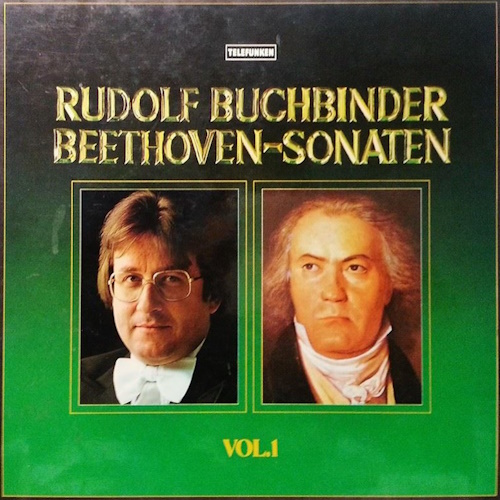
3 LPs - 6.35472 FK - (p) 1980

3
LPs - 6.35490 FK - (p) 1981
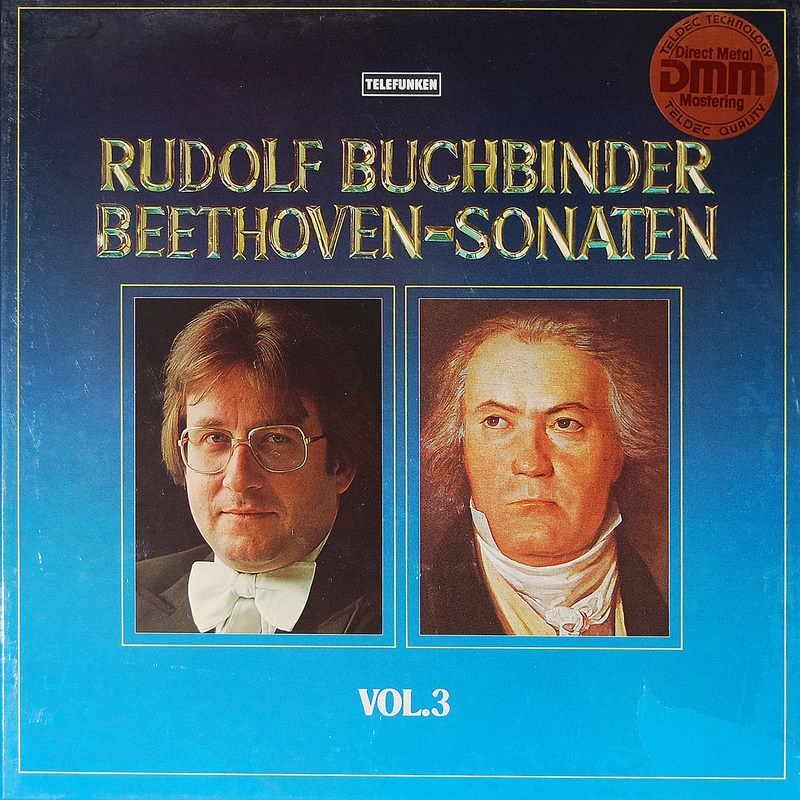
3 LPs -
6.35581 FK - (p) 1982

3 LPs -
6.35596 FK - (p) 1982 |
RE-RELEASE
ON
COMPACT DISC (DMM)

1 CD - 8.43415 ZK - (c) 1986
(Nr.1,2)
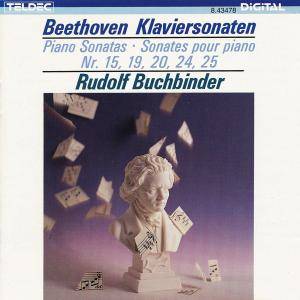 1 CD - 8.43478 ZK
- (c) 1987 (Nr.19,20,15)
1 CD - 8.43478 ZK
- (c) 1987 (Nr.19,20,15)
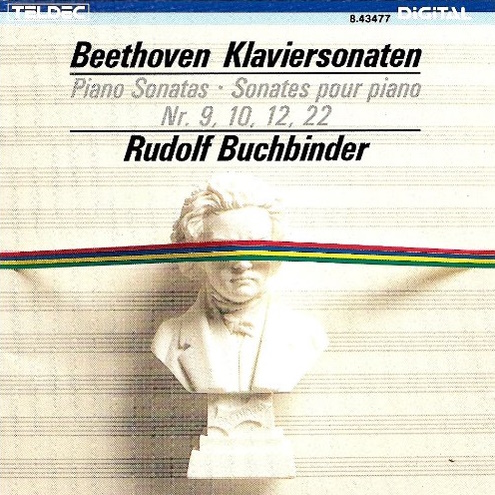
1 CD -
8.43477 ZK - (c) 1987
(Nr.12)
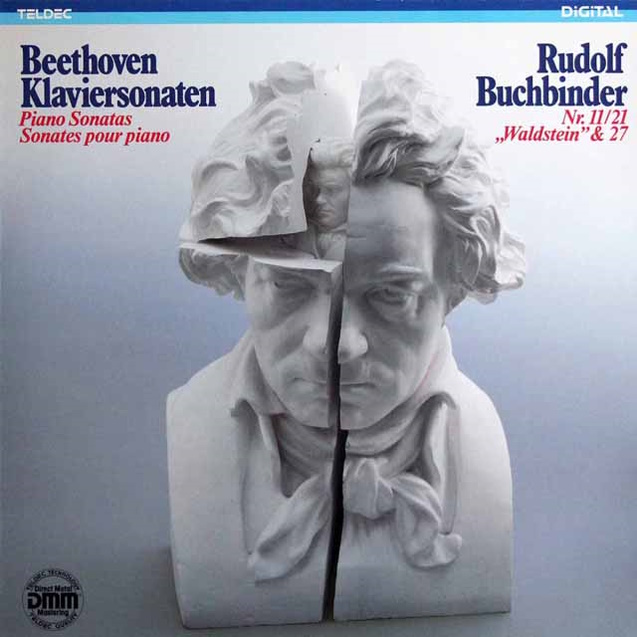
1 CD -
8.43111 ZK - (c) 1985
(Nr.21)
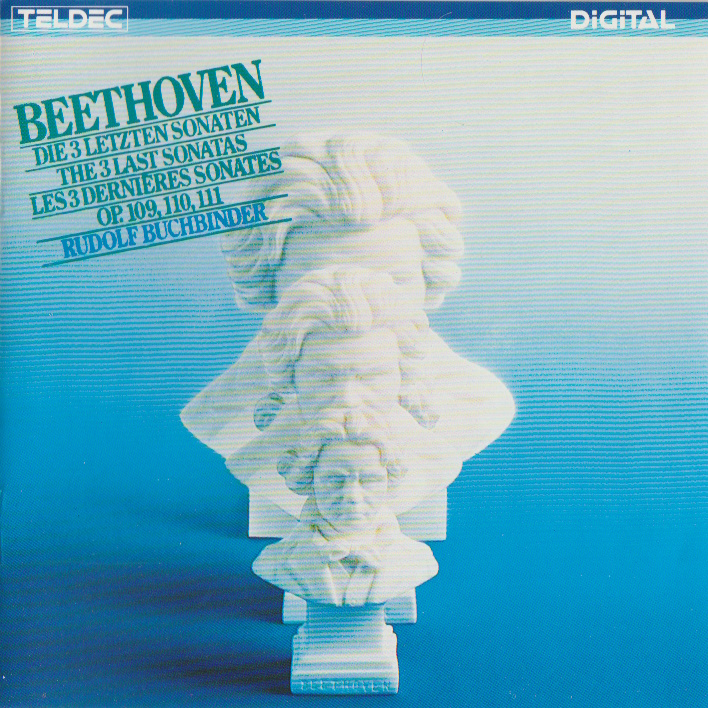
1 CD -
8.43027 ZK - (c) 1984
(Nr.32)
|
Piano
Sonatas Nr. 1 f-moll, Op. 2
Nr. 1 - Nr. 2 A-dur, Op. 2 Nr.
2
The first compositions that
Beethoven published in Vienna,
where he had moved from Bonn in
1792, were the three Piano Trios
op. l. These were soon followed
by the three Piano Sonatas op. 2
dedicated to his teacher Joseph
Haydn. (Actually the lessons
were very sporadic and the
rapport between the pupil and
his older “master,” then at the
height of his fame throughout
Europe, was evidently none too
easy.) The sonatas were written
in 1795, based on earlier
material, and printed in the
following year. Not only are
they entirely different from one
another, but they constitute in
themselves an ascending
sequence. While No. 3 is a
completely free, highly
individual work, No. 1 is still
comparatively conventional, and
no doubt intentionally so.
The first movement is extremely
terse, the exposition occupying
a mere 48 bars. Compactness is
the order of the day, there is
no unnecessary loquacity there
are no flourishes. This
concentration, which is also
particularly apparent in the
third movement, is in itself a
homage to Haydn. Beethoven opens
the first of his sonatas to be
accepted in the canon with a
commonplace: the ascending
broken minor triad at the
beginning of the piece, known in
the profession as the “Mannheim
rocket,” was in general use at
the time; one is constantly
reminded of the similarity to
the opening of the last movement
of Mozart’s G minor Symphony, K.
550. But what Beethoven does
with this motif is by no means
commonplace; the very first
sequence omits the anacrusis,
and thereafter only the turn
which concludes the opening
phrase is elaboratetd. Thus
Beethoven proves within a mere
eight bars what he can do with
this very ordinary tag, and that
what matters is not the basic
idea, but its musical
exploitation. "Development" is
not confined to the development
section of the sonata form, but
is to be found everywhere, in
every little detail. Beethoven’s
principle of continuous thematic
work, of composition as a
process - a notion which stems
primarily from Haydn - is
revealed even in this tiny
aspect of his first piano sonata.
In contrast to the concisely
stern, rather sombre sonata in F
minor, the finale of which
Czerny described as being
stormy, almost dramatic, like
the description of some serious
event, in the second sonata of
op. 2, in Beethoven's usually
bright and optimistic key of A,
a wayward, charmingly playful
note predominantes. The theme of
the last movement is quite
delightful: a graceful leap
across 3-1/2 octaves up to E in
Alt, the highest note in the
whole movement, which occurs
within the context of this
theme, and down again in an
almost exaggerated slide. One
might almost believe that
Beethoven chose the rondo form
in order to re-use this little
treasure: it occurs 5 times in
all, and the peak is attained in
a different manner on every
occasion. The beginning of the
scherzo almost anticipates the
Rondo opening: here again there
is a scurrying figure, the
broken A major triad ending,
surely not by chance, on exactly
the same note, E in Alt.
The first movement is on a very
large scale indeed, in
comparison with that of op. 2,
No. 1, which is not even half as
long; contrast, surprises and
internal relationship abound
and, unlike the uncomplicated
first sonata of the set, it is
as taxing as it is appealing to
the virtuoso. Both subject are
wayward and unexpected: the
first which, like the opening of
some Haydn symphonies, is full
of contrast, begins with two
terse, country motifs played
piano (but note the different
dynamics in the recapitulation).
The second subjet is introduced
not in the customary dominant
major, but in the gentle minor,
unceasing, unexpected
modulations, always introduced
by a dissonant note emphasised
by a sforzato, transform it into
a variant of the first subject
with abrupt dynamic contrasts.
The strongest possible
antithesis is provided by the
largo appassionato with its
almost orchestral writing and
fascinating display of different
reisters, which Czerny described
as bieng of a religious nature:
the sustained, broadly sweeping
tune is contrasted with the
generous palette of the
accompaniment, extending from
the dry staccato of the bassoon
to the cantilena of the strings.
Piano Sonatas Nr. 19
g-moll, Op. 49 Nr. 1 - Nr.
20 G-Dur, Op. 49 Nr. 2
These two pieces were
published in 1805 in Vienna
under the title ”Deux sonates
faciles pour le pianoforte.”
Beethoven's brother Carl had
already offered them without
success to German publishers
some years previously,
possibly even without the
composer's knowledge. They
were probably written in 1795
(No. 2) and 1796/98 (No. 1},
and are in essence sonatinas,
possibly occasional works
written for teaching purposes;
with the two Rondos of op. 51,
the first of which also dates
from 1796, they are
Beethoven's technically least
demanding piano works. Indeed,
Czerny did not include them in
the canon of piano sonatas
(which he, quite properly from
his point of view, treated as
consisting of 29 valid works;
the subsequent establishment
of a canon of 32 sonatas being
simply attributable to the
opus numbers) and described
them all bluntly as being
suitable for not particularly
expert players. It seemed an
obvious move to publish the
two pieces of op. 49 together:
both are in two movements and
represent the major and minor
modes of the key of G. Joachim
Kaiser has drawn attention to
some obvious allusions to
Mozart in the Sonatina in G
minor, including one to the
wellknown "Sonata facile,” K.
545. Shortly afterwards - in
1799 - Beethoven used the
theme of the Menuet of Sonata
No. 2 for the Menuet of his
Septet op. 20.
Piano
Sonata Nr. 12 As-dur, Op. 26
This work and the two sonatas of
op. 27, both subtitled ”quasi
una Fantasia," were all written
in the period 1800/01 and have
in common departures from the
traditional sonata form. This
applies particularly to the first
movements: in the two sonatas of
op. 27 Beethoven used a free
ternary form, whereas op. 26
begins with a set of variations.
Superficially Mozart's great
Sonata in A, K. 331, the first
movement of which is also an
Andante con variazioni, provides
the model; but Beethoven's
conception of the principle of
variation, cast for the first
time in a new mould in op. 26,
stretches far beyond the
innocent and cheerful
embellishments of the past.
These are "character variations”
in that each piece has its own,
unmistakeable features. In this
opening movement of op. 26
Beethoven explored, as though
for the first time, the
possibilities inherent in the
variation form which, shortly
afterwards (in 1802), were
presented in the two sets of
variations op. 34 and op. 35
(the ”Eroica” Variations) "in an
entirely new manner,” as he
proudly wrote to his publishers.
The second substantial departure
from the sonata model in op. 26
is the replacement of the slow
movement by a ”marcia funebre,”
i.e. a funeral march, subtitled
”sulla morte d'un Eroe” ("on the
death of a hero”). While in the
”Eroica” (subtitled ”to
celebrate the memory of a great
man”) actual references to
Napoleon, the contemporary hero
of world history, and the
tradition of depicting battles
in music were interwoven in an
overall poetic impression, op.
26 cannot be described as a
“heroic” sonata. So far no clues
have been discovered as to
Beethoven's choice of a funeral
march, nor about its subtitle.
Nonetheless the movement soon
became famous; it was published
on its own in the same year as
the first edition of the sonata
proper - 1802 - and has
continued to appear in that
form; Beethoven himself
orchestrated it in 1815 as
incidental music for a play; and
after his death in 1827 Ignaz
Ritter von Seyfried published an
arrangement of the piece with
added vocal quartet, entitled
”Beethoven’s funeral.”
In complete contrast, this
severe, solemn march is followed
by a deliberately lighthearted
finale rippling along in
ceaseless semiquavers. This
sonata, like the ”Pathétique”
op. 13 and the Trios op. 1, is
dedicated to Prince Carl von
Lichnowsky, Beethoven's most
important patron, of whom he
said in 1805: "He really is -
exceptionally for one in that
position - one of my most
faithful friends and supporters
of my art.
Piano
Sonata Nr. 15 D-dur, Op. 28
“Pastorale”
The fourth piano sonata to
appear in 1802, after op. 26 and
the two sonatas of op. 27, was
op. 28, written in 1801. In
comparison with its three
predecessors it is doubtless a
more lightweight composition,
presenting problems neither of
form nor of interpretation.
Perhaps there is some slight
connection between the serenely
restrained character of the
music and that of the dedicatee,
the nobleman Joseph von
Sonnenfels, a scholar and
statesman already in his
seventies, a respected upholder
of Enlightenment, whom Beethoven
apparently wished to honour;
nothing is known of any personal
acquaintance. The sonata
acquired its nickname quite
early on in English editions,
even before the Pastoral
Symphony (1807/08): it probably
derives from the bagpipe-like
bass figure in 6/8 time which
imparts a characteristic flavour
to the last movement. (As late
as 1842 Czerny attributed the
nickname specifically to the
finale: “A cheerful pastorale,
jocose and good-natured.”) One
should not, however, allow these
associations to obscure the fact
that the work displays
significant structural
relationships. The two outer
movements are linked by an
insistant drone-like D in the
bass, lasting almost 40 bars in
the first movement, and by the
virtually identical beginning of
the first subjects of both
movements. The link between the
first and third movement is
provided by a striking rhythmic
motif - both movements are in
3/4 time: two crotchets plus a
crotchet rest in the epilogue of
the first movement and the main
theme of the Scherzo, and its
inversion in the middle section
of the first movement and the
Trio of the Scherzo. The three
main thematic groupings of the
first movement are distinguished
by the clear difierences in their
rhythmic character; this is
paralleled to a certain extent
by the pronounced contrast
between legato and staccato in
the various sections of the
second movement. According to
Czerny, this movement, an
andante, was for many years one
of Beethoven's favourite pieces;
he often played it just for
himself.
Piano
Sonatas Nr. 21 C-dur, Op.
53 "Waldstein-Sonate"
This sonata,
which dates from 1803/04, is
one of a number of major works
written at that time: the
“Eroica” Symphony, the Triple
Concerto and, first and
foremost, the opera “Fidelio”,
then still called “Leonore”.
With the “Appassionata” op.
57, composed in 1804/05, the
“Waldstein” signifies a new
phase in Beethoven’s sonata
writing. This is the first
appearance of the “great”
sonata, great not only in its
dimensions but also in its
structure which, while scaling
almost symphonic heights,
shows in the arrangement of
the whole the attention to the
smallest detail. There can be
no mistaking the common
features between the
“Waldstein” sonata and the
symphonic innovations of the
“Eroica”. These new
conceptions are realised by
means of tremendous
sonorities, by the
exploitation of all the
registers of the instrument,
calling for pianistic
virtuosity far exceeding that
hitherto required but never
becoming an end in itself.
The unusual proportions of the
sonata were an afterthought:
between two very long outer
movements there is now a short
“Introduzione”, very free,
almost improvisatory, just one
little motif with constantly
changing figurations. But
originally there was a
different second movement, the
so-called “Andante favori,” of
which Beethoven's pupil
Ferdinand Ries reported: "A
friend of Beethoven's told him
that the sonata was too long
and was terribly castigated
for it. But when he thought it
over quietly, my teacher soon
became convinced that the
comment was justified.
Thereupon he publisged the
andante in F on its own and
subsequantly added the
interesting Introduction which
now precedes the Rondo." To
this Czerny added: "Because of
its popularity (Beethoven
often played it at parties) he
gave the movement," which now
stood on its own, "the name
'Andante favori'." The sonata
is dedicated to Count
Ferdinand von Waldstein,
Beethoven's most important
patron in the early days in
Bonn and himself a fine
musician who had settled in
Vienna on account of the
political upheavals. Strangely
enough, although Beethoven
received so many kindnesses at
his hands, he dedicated only
this one work to him.
Piano
Sonatas Nr. 32 c-moll, Op. 111
After some years of faltering
productivity, Beethoven's "late
period" commenced about 1818;
this is when he wrote a series
of tremendous works which
contrast most radically with all
that had gone before. First
there was the Hammerklavier
sonata op. 106 (1817/18); then,
from 1819 onwards, the Missa
solemnis and the three last
piano sonatas, the Ninth
symphony (1823/24) and finally,
in rapid succession, the five
last string quartets (1823/24).
The three sonatas opp. 109, 110
and 111 were the only major
works for which Beethoven could
find the strengh in addition to
the Mass, with which he wresled
for so many years.
Op. 111 has only two movements,
as did opp. 54, 78 and 90 (and,
in a manner of speaking, the
final version of the
“Waldstein”), though in all
these the second movement is in
a fast tempo, as is customary
with finales. Here, however, as
in the last movement of op. 109,
we have a huge set of variations
in what is basically a slow
tempo, taking almost twice as
long as the first movement:
richly endowed with figurations,
combining in itself several
tempi through its changing time
signatures, abundant in
character as in sonorities some
of which, such as the chains of
trills or the long stretches of
unchanged harmony, recall the
last movement of the
“Waldstein”. Nowadays we
recognise this Arietta as one of
the peaks of Beethoven's
instrumental works - partly
influenced by the famous
passages in Thomas Mann's novel
"Dr. Faustus;" however, a
quotation from the
"Beethovenbuch" by the
composer's admirer Wilhelm von
Lenz, written as late as the
1850s, will indicate the unease
with which his contemporaries
accepted it: "Maybe these
variations, taken on their own,
will be understood one day; but
it is doubtful whether they will
ever be considered beautiful, or
whether these rhythmic
innovations are apt to achieve
any considerable importance."
Beethoven's amanuensis Anton
Schindler reports that when he
asked why there was no "finale,"
Beethoven answered that he had
been worn out and had no time
for a third movement, and that
was the reason for the lenght of
the second one. No doubt the
irony of the reply to the
persistent questioner who
lacked, as so often, a grasp of
matters artistic, was
deliberate. In the final
analysis there is no point in
puzzling over the matter; op.
111 is as "finished" in its own
way as is the "Unfinished"
Symphony by Schubert. The sonata
was dedicated to Beethoven’s
most prominent pupil and
possibly his only friend of his
later years, the Archduke Rudolf
of Austria, not least of all as
an act of politeness towards the
dedicatee, since the composer
had been unable to complete, as
promised, the Missa solemnis in
time for his patron’s
installation as Archbishop of
Olmütz in 1820.
Jean
Meuchtelbach
(Translation: Lindsay Craig)
|
|
|
|
|